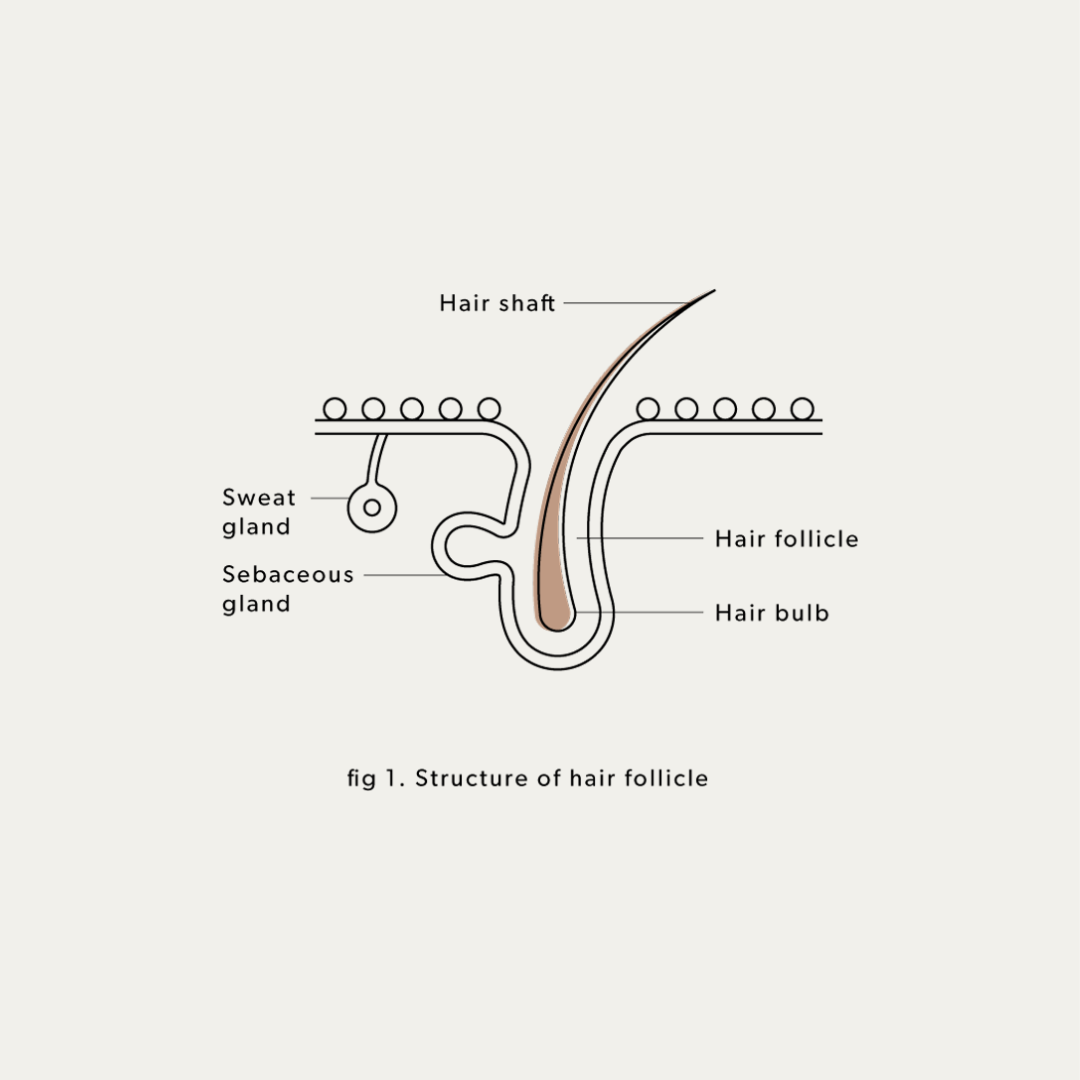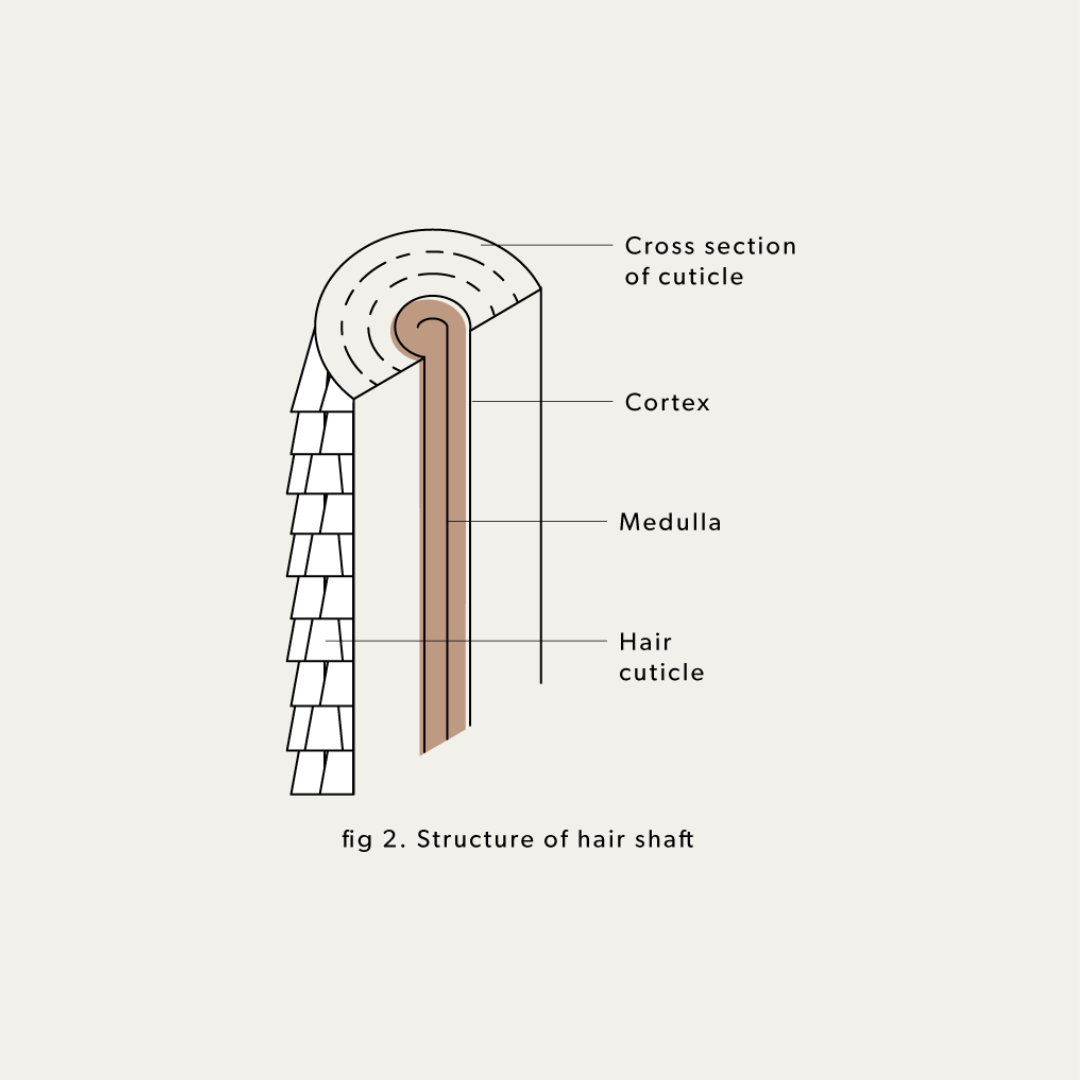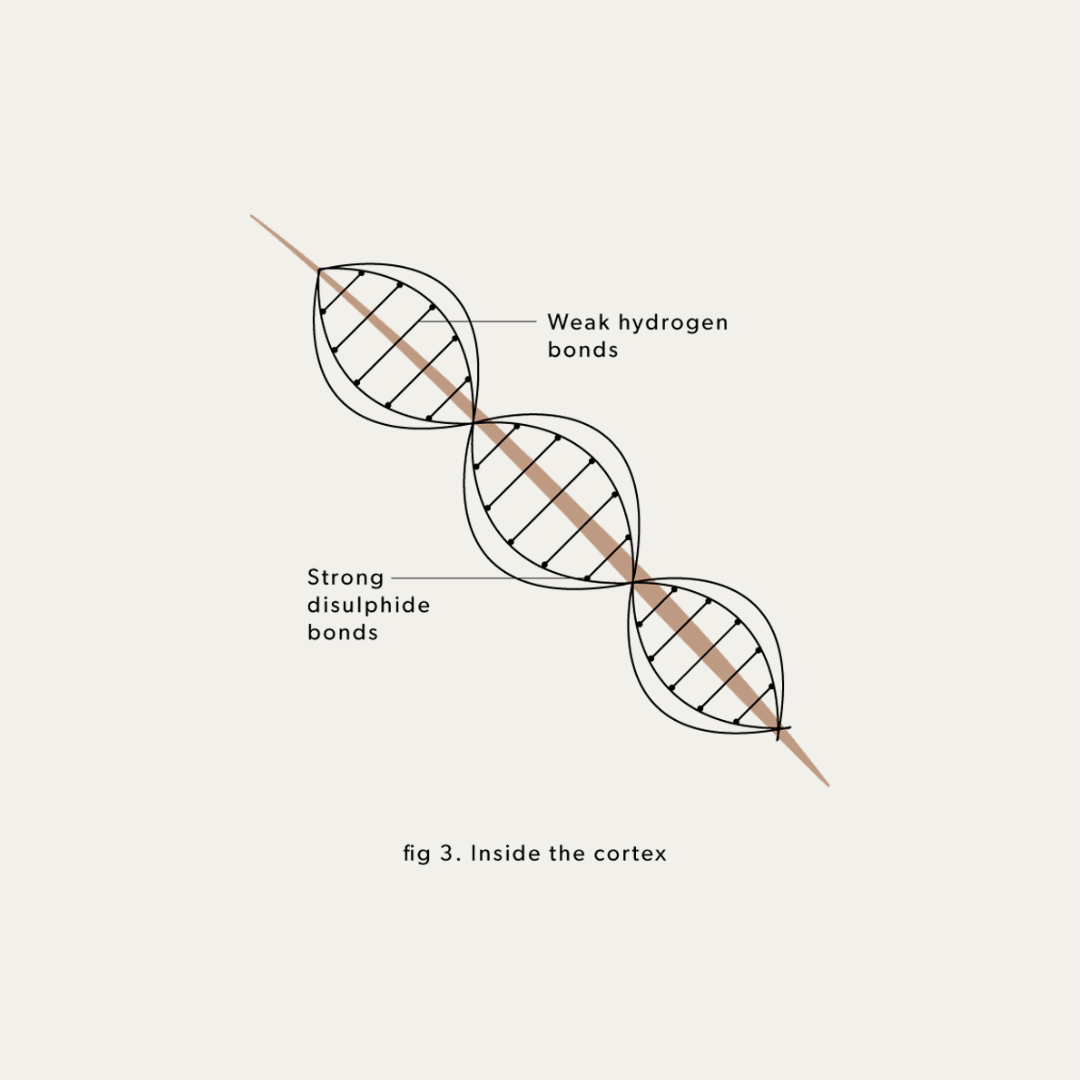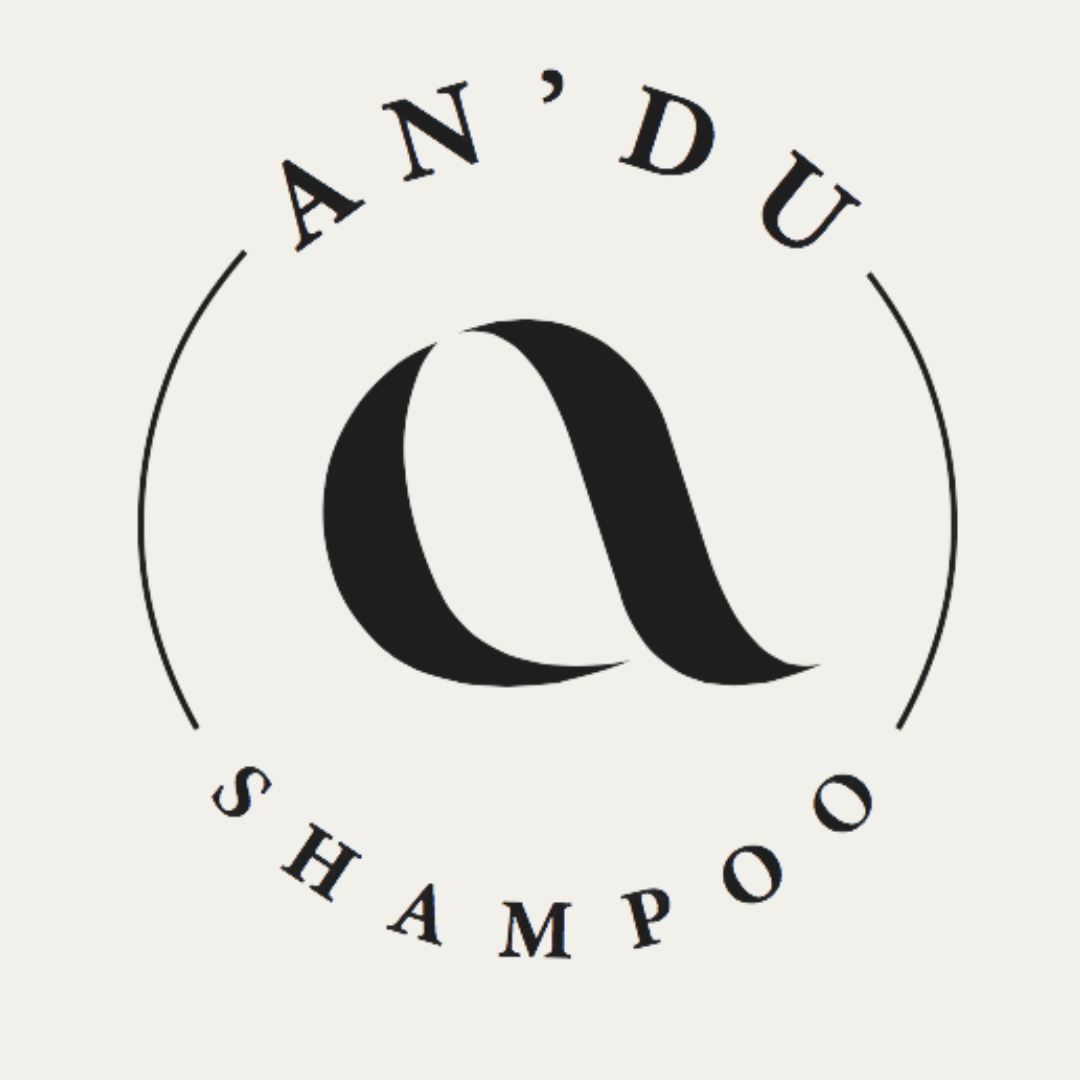
Hair follicles
The scalp is made up of thousands of hair follicles. Each hair shaft grows out of its own follicle starting at the hair bulb, every follicle containing its personalised protective oil (sebum) gland (Fig 1).
Sebum production varies between person to person, protecting hair giving it a healthy shine, while excessive production can cause oily looking hair. If your hair follicle is shaped like a cylinder you will have straight hair, if however, you have an oval shaped follicle your hair will be curly. The hair is then kept in this shape by the disulphide bonds within the cortex of the hair shaft.
Sweat glands are found beneath the epidermis. Sweat helps unclog the follicles that can get blocked with bits of dead skin, general dirt, pollution as well as old sebum. So sweating during a workout or on a muggy day can be helpful, it is however, important to wash the sweat away, as it is high in salt and can damage the hair if left on the scalp.
The Microbiome
Sitting on the surface (epidermis) of our scalp is the microbiome. This is a complex living film of predominantly bacteria and yeast. Unlike the gut microbiome which contains many different bacteria, the scalp microbiome has three main microbial genera, these are Cutibacterium, Staphylococcus and the fungus Malassezia. Like all living things, it needs to be in balanced harmony. When it is, it provides a wonderful protective coat to your scalp, imbuing it with essential nutrients and producing substances that can inhibit the growth of other more detrimental microbes. When out of balance (dysbiosis), the scalp is predisposed to conditions such as dandruff and seborrheic dermatitis. Keeping this 'balancing act' is essential in maintaining a healthy scalp. The science of how topical products can help the microbiome is in it's infancy and there are few trials and studies available.
Things you can do to help your microbiome:
Eat a balanced varied diet - studies have shown that your gut microbiome has an impact on your skin and scalp microbiome. *Don't over wash your hair - that way you can leave some natural protective oils which help support the hair shaft and follicle as well as the microbiome.Use a gentle shampoo. The bio-fermented cleanser (surfactant) in our shampoo has been shown to be the most moisturizing when compared to 7 other well known cleansers.

The hair shaft
The hair shaft itself is made-up of 3 layers, the outer cuticle, middle cortex and central medulla. Some very thin hairs do not have a medulla. (Fig 2). Hair is made of keratin, a naturally strong structure;, healthy hair can hold up to 30% its own weight.
The Cuticle
Under the microscope the cuticle looks and acts like overlapping roof tiles or fish scales. Like roof tiles, they are the first line of defense, protecting the more fragile inner hair from pollution, chemicals, and friction. They control the passage of water into the hair shaft, keeping the hair hydrated and shiny. Once the cuticle is damaged, the cells stick up and the hair dehydrates becoming dull looking and brittle. Once the cuticle is damaged it cannot repair itself; this is when you get split ends. While some shampoo and conditioners claim to heal the damaged outer cuticle layer or split ends, they are actually putting a protective layer over the damaged cuticle so protecting the shaft beneath, rather than repairing the cuticle itself. Cutting out the damaged hair is the only way to completely solve your problem of damaged cuticle. The cuticle is more easily damaged when wet, which is why we always say be gentle with your hair when wet, softly dab your hair with an absorbent towel rather than vigorously rubbing it dry. Try not to detangle the hair when wet, if you want to brush it use a brush or comb with wide teeth and try not to tug at your hair. 'Alkaline pH may increase the negative electrical charge of the hair fibre surface and, therefore, increase friction between the fibres. This may lead to cuticle damage and fibre breakage. It is a reality and not a myth that the lower pH of shampoos may cause less frizzing for generating less negative static electricity on the fibre surface'. *** That's why our shampoo bars are all pH balanced between a range of 5 and 5.5 to ensure your hair is nourished, not damaged.

The Cortex
Beneath the cuticle is the cortex, this is where the color of your hair comes from. The cortex is held together by hydrogen and disulphide bonds. (Fig 3) Disulphide bonds are one of the strongest naturally occurring bonds in nature. While it is the shape of your follicle that determines whether your hair is straight or curly, it is your disulphide bonds that keep your hair in this shape. When you have a perm it is the disulphide bonds that are broken then reformed once your hair is in your new chosen shape.
Hydrogen bonds on the other hand can easily be broken by water and can be temporarily reset again with heat. If your hair is damaged, the cuticle can let in more water making it look frizzy, then again on a very humid day even healthy hair can let in the moisture, giving you that frizzy feel.
The medulla, present only in thicker hair is the innermost layer and consists of a soft, thin core of transparent cells and air spaces.
Hair Growth
Hair grows in spurts (anlagen phase) then rests (telogen phase). Every day we shed 50-100 hairs - this is a normal part of the cycle. If we are unwell, under acute stress, have health issues such as thyroid problems or poor nutrition then we can shed more than usual or grow fewer hairs than usual especially if our episode of bad health or stress happens during the growth cycle of our hair.
Obviously this is difficult to control, we can't predict if and when we are going to become unwell, it's been frequently documented that hair loss has occurred after suffering from Covid 19 infection. But provided you have adequate iron levels, your hair will return. Really, the best way to maintain your hair is to just look after yourself; eat well, exercise frequently and the body will do the rest.


